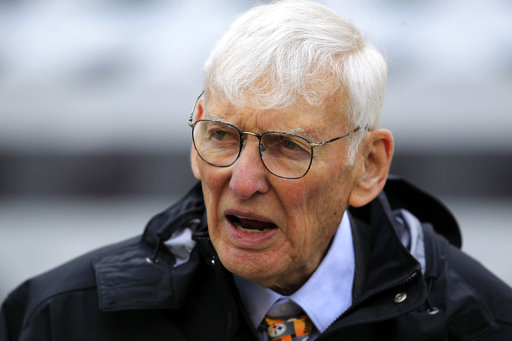
Dan Rooney's leadership on diversity in hiring
A well-respected leader in professional football has died, Dan Rooney, owner of the Pittsburgh Steelers. It’s hard to know which aspect of his effective leadership to start with—the respectful manner in which he treated players, his belief that he belonged in the background. “My job is to make other people’s jobs easier,” he said, exemplifying the kind of servant leader who is effective because of his humility and appreciation for the role he needed to play.
Discipline in one’s role is hallmark of ethical leadership but it is not Rooney’s greatest legacy. Organizations of all types—sports, businesses, nonprofits—have deployed a practice known as the Rooney rule, perhaps some of them without knowing it as such.
I never heard that expression in the newsroom of the Mercury News, where I was first introduced to the practice by executive editor, Jerry Ceppos, now the dean of the LSU School of Journalism. Rooney crafted a rule that requires all NFL teams to interview at least one minority candidate for all vacancies. Started initially to help diversify the ranks of head coaches, it is used for other NFL positions now. And Ceppos decided to put it work to achieve the same goal in the Mercury News editorial ranks in a variety of positions. (Ceppos, not known as a sports fan, may very well have had no idea he was borrowing from the NFL at the time.)
Journalists in the audience resisted the concept. Never shy at expressing their opinions, perhaps because they were bound to report only facts in their reporting, they challenged the idea as fundamentally unfair. In a tweet today, someone quoted Rooney reminiscing on his similar experience when he introduced the approach.
“There were some people who said, ‘I want to hire whoever I want to hire. You can’t be telling us who to hire.’” As Rooney reported his response: “That is your decision, but we say you must give some opportunity to an African-American or minority. That sort of took hold. And when we went through with that, it worked.”
The are several key aspects to Rooney’s leadership in this area, perhaps most importantly that he had the capacity and the courage to look beyond his own organization and assess the systems at work in the larger ecosystem it operated in, the NFL. He identified a system design flaw in hiring that HR professionals regularly acknowledge today, but was considered a breakthrough at that time—people tend to hire in their own image. We all have unconscious biases and this is one of them.
Not every leader can develop a strong team, marshal resources, and build consensus around a need for change. Those that have the capacity to contribute toward ethical system design can have a significant impact. Rooney literally changed the face of NFL leadership, as Ceppos changed the Merc’s newsroom—and journalism over time. Countless other organizations have been changed by people who learned from their examples. To change a long-standing practice takes courage, tolerance for experimentation and failure, and fortitude to back change long enough so it sticks. Rooney had those abilities and the insight to appreciate that fairness off the field would make the game better.